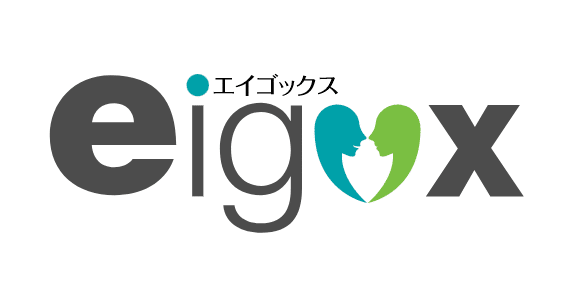Teach Japanese Students: Top Companies
Here are the top companies you can work for to teach English online to Japanese students. If you are interested in helping Japanese students learn English, there are quite a few options.
Keep in mind that Japan’s peak teaching hours are on weekday mornings and evenings, and weekends. This translates to United States’ early morning hours (5 am – 8 am ) or European afternoon hours (12 pm – 3 pm).
Also, full disclosure, I have not worked for any of these companies personally. So, checkout Reddit ESL groups to ask current teachers about the company if you want some personal
#1. Mainichi Eikaiwa
If you want to teach English to Japanese students then Mainichi Eikaiwa is the company for you.
They are the leading online English school in Japan. Teachers working for them teach business and conversational classes to Japanese students.
Mainichi Eikaiwa hires native English speakers only, but they include South Africans (which many companies do not hire.)

The company focuses on teaching high school students and young professionals. This is a good teaching opportunity for teachers who don’t want to teach little kids or “clown around” in edutainment. If preparing students by offering college prep is more your style, then Mainichi Eikaiwa is a good fit.
Mainichi Eikaiwa Teacher Requirement
- have a laptop
- noise-canceling headphones
- native English speaker (S.African OK!)
- Bachelor’s degree
Mainichi Eikaiwa Teacher Pay
- Minimum: $10
- Maximum: $18
#2. E-communication

E-communication is a great option for teaching Japanese students online because they pay well, especially for those who live in Japan already. Their hiring process is one of the more difficult ones to teach online English in Japan, but they pay a standard rate of ¥2,000-¥2,300/hour. This is roughly $20 an hour and it is a relatively high pay for teaching ESL online.
E-communication English Teacher Pay
- 2000 – 23000 JPY per hour, $16-$20/hour for Americans.
- standard rate of ¥2,000-¥2,300/hour if the teacher is living in Japan
E-communication Teacher Requirements:
- ESL experience and business Experience
- Basic Japanese speaking ability
#3. Eigo Power

Eigo Power is a great opportunity for beginning teachers who want to teach Japanese kids online, because they don’t require any formal qualifications. You will teach one-to-one classes, 25 minutes long. However, note that their pay is low for ESL industry standards. They are a good stepping stone to start your online teaching journey, though.
Eigo Power Teacher Requirements
- Non-Native Speakers accepted!
- Have a PayPal account. Eigox pays salaries only through PayPal.
Eigo Power English Teacher Pay
- ¥600~ (approx. US$5.40~) per 25 minute lesson
#4. Cambly
Next, consider signing up for Cambly. I have had many Japanese students on Cambly. Cambly caters to students all around the world. However, If you teach during Japanese priority hours and add your interest in Japanese students to your Cambly profile, then you can build up a primarily Japanese student base on Cambly too.
Cambly caters to students all around the world. If you open your schedule during peak hours in Japan, you will receive many Japanese students. You can go further and cater your profile primarily to Japanese, too, to build a that student base.
For example, you can write some of your profile in Japanese, or even directly state you want to work with Japanese students.

Cambly Teacher Requirements
- no degree or teaching certificate is necessary
- must be a native English speaker
- laptop or desktop or Chromebook
- no minimum hours, no commitment.
Cambly Teacher Pay
- earn $10.20 USD/hour
- Cambly pays the same regardless of your residency- so great for expats in cheap countries
If you apply, make sure you read Understanding Your Cambly Rating: My Top Tips because your rating is very important for getting peak priority hours on Cambly and getting the students you want.
#5. English Hunt
English Hunt has expanded into teaching Japanese students. When you teach for English hunt, you will also teach Korean students.
English Hunt Pay:
- $14 per hour
English Hunt Teacher Requirements:
- must have a BA
- either a teaching certificate or 4 years of teaching experience.
Teach English: Live in Japan
In addition to checking out these opportunities to teach English online to Japanese students, you can also consider actually moving to Japan and getting a job in a school there. If this interests you, then read How To Teach English in Japan

I also made an extremely comprehensive comparison chart that you can look at. You can sort through the columns to filter by companies that only focus on Japanese students and find the company that is the best fit for you.
Once you have picked an online company to teach for, you also have to really tailor your lessons to Japanese students. They struggle with specific English language issues that might be new for you.
Tips for teaching English to Japanese students
First, don’t panic. Many people might seem that English and Japanese have nothing in common but, despite the two languages having different roots, English and Japanese do share some similarities. For example, They share similar usage of subjects, objects, and verbs. Still, there are several English language issues that Japanese students might struggle with.
Let’s take a closer look at these issues so you can customize your classes for your Japanese students.
They will have unique pronunciation struggles
The very first issue is pronunciation. English pronunciation can be tough for anyone to master, but Japanese students often struggle with the differences in pronunciation between the two languages. One of the biggest issues is the pronunciation of the “r” sound, which doesn’t exist in Japanese. Japanese students might also struggle with differentiating between similar sounds, such as “l” and “r,” or “th” and “s.” Try giving them a Needs assessment when you begin meeting them, to establish a baseline. Give them the Rainbow Passage to locate their pronunciation weaknesses.
They will struggle with verb tenses
English has a complex system of verb tenses, and it can be challenging for Japanese students to learn and apply them correctly. For example, the difference between “I am going” and “I will go” might be difficult to understand. Japanese also doesn’t have the same concept of past perfect or future perfect tenses as English, which can confuse learners.
They will struggle with sentence structure
Japanese and English have different sentence structures, which can be challenging for Japanese students to navigate. In Japanese, the verb typically comes at the end of the sentence, while in English, the verb generally comes in the middle. This can make it difficult to construct grammatically correct sentences in English.
They will struggle with articles
English uses articles such as “a,” “an,” and “the” to indicate whether a noun is specific or general. However, Japanese doesn’t have articles in the same way, which can be confusing for learners. Japanese students might struggle to understand when to use articles and when to leave them out.
Study up and prepare
In conclusion, you will have to familiarize yourself with the differences between Japanese and English in order to ensure your students get the best ESL classes possible.
You might also want to check out these posts if you’re looking for online English teaching positions that cater to Asian students:
ESL companies that are hiring now


Also, more options…
There are many other platforms to freelance teach English online and you can market primarily to Japanese students by noting this in your biography. Here are some popular ones.
Cafe Talk
Cafe Talk is a popular ESL company with Japanese students. The company has Japanese adults as its audience along with adults from other countries.
But, Cafe Talk is a freelance English online tutoring platform. So, you must post your profile and set your own rates.
Overview of Cafe Talk
Here are some common platforms that let you teach English online to Japanese students:

Eigo Power
You can also teach English online to Japanese students through Eigo Power.
Eigo Power Pay
$5 – $12 USD per hour
Eigo Power Teacher Requirements:
- No BA required
- NO TEFL required
- Native speaker required
I also made an extremely comprehensive comparison chart that you can look at, too. You can sort through the columns to filter by companies that only focus on Japanese students and find the company that is the best fit for you.
さようなら、ありがとう!













